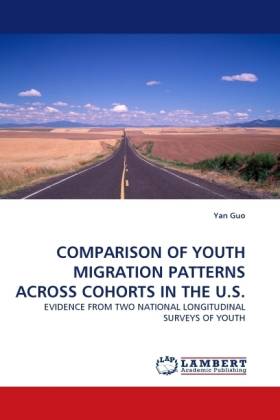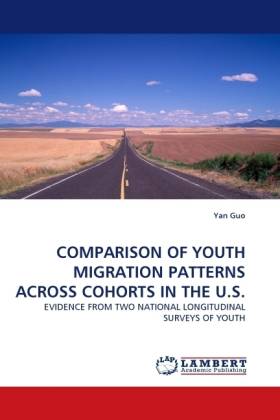
- Afhalen na 1 uur in een winkel met voorraad
- Gratis thuislevering in België vanaf € 30
- Ruim aanbod met 7 miljoen producten
- Afhalen na 1 uur in een winkel met voorraad
- Gratis thuislevering in België vanaf € 30
- Ruim aanbod met 7 miljoen producten
Zoeken
COMPARISON OF YOUTH MIGRATION PATTERNS ACROSS COHORTS IN THE U.S.
EVIDENCE FROM TWO NATIONAL LONGITUDINAL SURVEYS OF YOUTH
Yan Guo
Paperback | Engels
€ 58,45
+ 116 punten
Omschrijving
This research is a systematic comparison of youth migration experiences between two birth cohorts, using the first ten rounds of two national longitudinal surveys of youth, NLSY79 and NLSY97. Youth today have a delayed but stronger migration momentum than the late baby boom generation, the dividing point being at age 22. Women are more likely to migrate than men in the recent cohort, but not in the older cohort. Whites migrate considerably more than blacks and Hispanics consistently across cohorts. The likely life events in youth s transition to adulthood are important indicators of youth s migration propensity for both cohorts. Particularly, graduating with a bachelor s degree is the most powerful predictor of youth s migration propensity. Other life events such as getting married; becoming separated, divorced, or widowed; dropping out of college; and losing a job are also significantly associated with youth migration. In general, the effects of these life events on youth s migration propensity are weakened across cohorts, but the importance of having a college degree on migration propensity has been increasing.
Specificaties
Betrokkenen
- Auteur(s):
- Uitgeverij:
Inhoud
- Aantal bladzijden:
- 156
- Taal:
- Engels
Eigenschappen
- Productcode (EAN):
- 9783838331270
- Uitvoering:
- Paperback

Alleen bij Standaard Boekhandel
+ 116 punten op je klantenkaart van Standaard Boekhandel
Beoordelingen
We publiceren alleen reviews die voldoen aan de voorwaarden voor reviews. Bekijk onze voorwaarden voor reviews.








